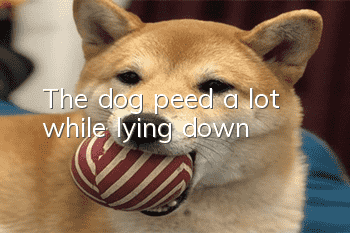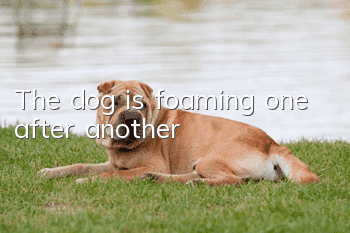How to treat lumbar disc herniation in dogs? These dogs are not suitable for climbing stairs!

What are the symptoms of intervertebral disc disease?
When a disc first ruptures, it usually causes severe pain. If this occurs in the middle of the back, the dog will bend over in pain. When a herniated disc occurs in the neck, the dog may be unwilling to turn its head or lower its head to eat or drink. Some dogs will tremble, or walk slowly, or be stiff. In a severe herniated disc, the leg may be partially or completely paralyzed. Nerves in the bladder and colon may also be affected, making the dog have difficulty urinating or having difficulty defecating.In summary, herniated disc symptoms will vary depending on which part of your dog’s spine is affected, but may include:
• Stiff neck
• Back pain
• Screams when grabbed or picked up
• Tremors
• Unwilling to run or play
• Unable to walk or walks with abnormal gait
• Paralysis
• Mild paralysis (partial loss of movement or weakness)
Prevention of disc disease?
The most important prevention point is to prevent dogs from becoming too obese. Increased weight will increase the burden on the waist, and coupled with insufficient exercise, it can easily lead to disc herniation. Therefore, reasonable and scientific eating habits are the top priority.The smooth floor at home is also an often overlooked point. The smooth floor is not enough for the dog to effectively support the body. It is best to cover it with carpet, and the hair on the soles of the dog's feet should not be shaved casually. Lose.
Dogs also need to pay attention when going up the stairs. Going straight up and down will also increase the burden on the spine. It is best to guide the dog to go up and down the stairs in a zigzag manner (just like a mountain lifter).
Moderate muscle exercise and adequate nutrition during the growth period can effectively prevent intervertebral disc herniation in dogs.
Is intervertebral disc disease hereditary? < br /> What is the treatment for intervertebral disc disease?
Supportive care
Acupuncture, cold laser therapy, and physical therapy can aid recovery. These treatments can help your dog restore nerve function, reduce pain, and help keep his muscles from deteriorating during recovery. Dogs in severe pain may require hospitalization, intravenous fluids, and intravenous pain medication. Drug treatment
Analgesics are generally used in cases of intervertebral disc herniation, and steroids and non-steroidal anti-inflammatory drugs may also be used., muscle relaxants and other drugs. Doctors must take medication under the guidance of a professional doctor. Equipment
If your dog is paralyzed, you can use a dog-specific wheelchair or stroller to move your dog.
Random articles
- What are the common dog skin diseases in summer? Be careful to prevent them!
- Can the newly purchased dog be vaccinated?
- How to train an Alaskan dog to stop eating poop, a must-read for beginners!
- Are French bulldogs more likely to have dystocia when giving birth to puppies? Bulldogs give birth!
- How to treat arthritis in dogs
- How to trim your dog’s legs and feet
- How to train a dog to pick up things? It doesn’t just require beating and scolding!
- How to train a Schnauzer not to bark? Train Schnauzer’s obedience!
- How to teach a dog to pick up the food bowl? Easily teach a good dog!
- Never feed these foods, as they can easily affect your dog’s health!



